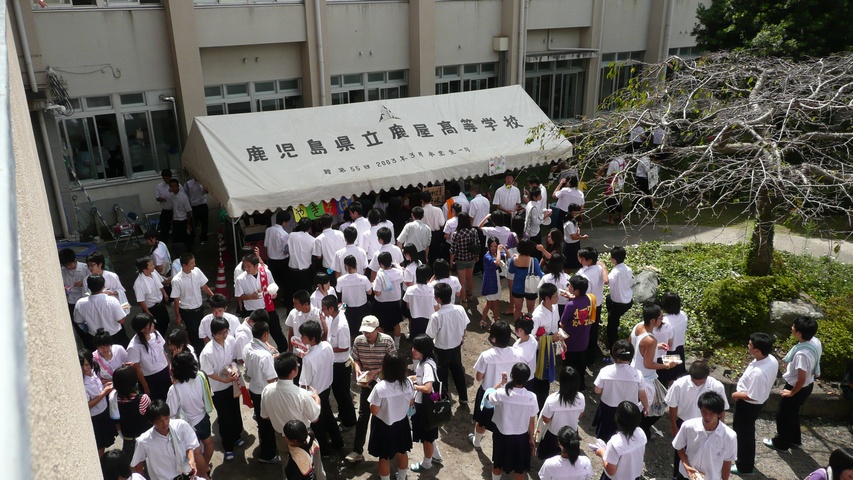Japanese Cultural Festival on:
[Wikipedia]
[Google]
[Amazon]
 in Japan are annual open day events held by most schools, from
in Japan are annual open day events held by most schools, from
 in Japan are annual open day events held by most schools, from
in Japan are annual open day events held by most schools, from nursery schools
A preschool, also known as nursery school, pre-primary school, or play school or creche, is an educational establishment or learning space offering early childhood education to children before they begin compulsory education at primary schoo ...
to universities
A university () is an institution of higher (or tertiary) education and research which awards academic degrees in several academic disciplines. Universities typically offer both undergraduate and postgraduate programs. In the United States, ...
at which their students display their artistic achievements. People who want to enter the school themselves or who are interested in the school may come to see what the schoolwork and atmosphere are like. Parents may also want to see what kind of work their children have been doing. The festivals are usually open to the public, especially at high schools and universities.
Definition
According to the curriculum guidelines of the Ministry of Education, Culture, Sports, Science and Technology, cultural festivals are part of special activities and are defined as "events which aim to use the results of everyday learning to heighten motivation". The cultural festivals are parts of regular lessons inelementary schools
A primary school (in Ireland, the United Kingdom, Australia, Trinidad and Tobago, Jamaica, and South Africa), junior school (in Australia), elementary school or grade school (in North America and the Philippines) is a school for primary ed ...
, junior high schools, and high schools, so the students are obligated to attend for graduation. In universities, the cultural festivals are placed as extracurricular activity, so attendance is not required.
Traditionally, most schools hold festivals on or around Culture Day (November 3), a Japanese national holiday. Normally it is held on a Saturday or Sunday; sometimes even both.
Name
"Cultural festival" (''bunkasai'') and "university festival" (''daigaku-sai'') are common nouns in Japanese, so particular names of cultural festivals depend on each school. For example, the festival at the University of Tokyo, Komaba Campus is named Komaba-sai.Names
Variations
The school festivals of junior high schools and high schools may also sometimes be called , , or .Function
Festivals are held to display the students' learning, but many people visit a festival as a recreational diversion. Alumni often take the opportunity to visit schools they once attended. Food is served, and often classrooms or gymnasiums are transformed into temporary restaurants or cafés. Dances, concerts and plays may be performed by individual volunteers or by various school clubs, such as the dance club, the literature club, the orchestra club, the band club, and the drama club. Cultural festivals are intended to be a fun event, but are also the only opportunity each year for students to see what life is like in other schools. They are also intended to enrich people's lives by increasing social interaction and fostering community ties.Cultural depictions
Cultural festivals are frequently depicted inanime
is hand-drawn and computer-generated animation originating from Japan. Outside of Japan and in English, ''anime'' refers specifically to animation produced in Japan. However, in Japan and in Japanese, (a term derived from a shortening of ...
and manga. For example, the climax of '' A Silent Voice'' (2016) takes place at the ''bunkasai''.
See also
* List of festivals in JapanReferences
External links
* {{Commons category inline, School festivals in Japan Education in Japan Festivals in Japan